“I grew up sitting on my sister or mother’s lap, watching movies . . . when I was two or three years old because that’s what we did,” Bob Mackie said of his childhood.
“There wasn’t anything else to do that was any fun. I liked the Technicolor ones. I liked the musicals because they were usually Technicolor. They had the most going on. They had the prettiest ladies and they went to the best places. It was certainly a lot nicer than where I lived.”
Robert Gordon Mackie was born on March 24, 1939, in Monterey Park, California, to Mildred Smith and Charles Mackie. He and his half-sister, Patricia, were raised in Alhambra by his maternal grandparents, Herbert and Agnes Smith. “I didn’t live with my mother as a child so [watching movies] was often our activity when she would come to visit me,” Mackie said. “She was a divorced lady and working, and that was a little fantasy for her as well. On the way home in the streetcar, I would just have a million questions, ‘Why did they do this?’ and ‘Why did they do that?’ and ‘Why did she wear those long dresses?’ because I could never really understand period films. I didn’t know what it was, but I knew it was different. And my mother would say, ‘That’s how they dressed in the olden days. That’s an old-fashioned movie.’
“For me, the future was what was going on in these films. This was where I wanted to end up. It gave me an interesting direction that I’d never thought about really and all of a sudden one day [I thought] ‘I could do that. I could design that. And it kind of came to me in a flash.’” The “flash” came after a showing of An American in Paris (1951). Mackie stayed for the credits to see who had designed the ballet sequence (it was Irene Sharaff).
While in high school, Mackie lived with his father in Rosemead. He designed costumes for school plays and musicals, and the mothers of the students would make the clothes from his sketches. The mothers’ finished clothes were usually a little more conservative than Mackie’s original designs.
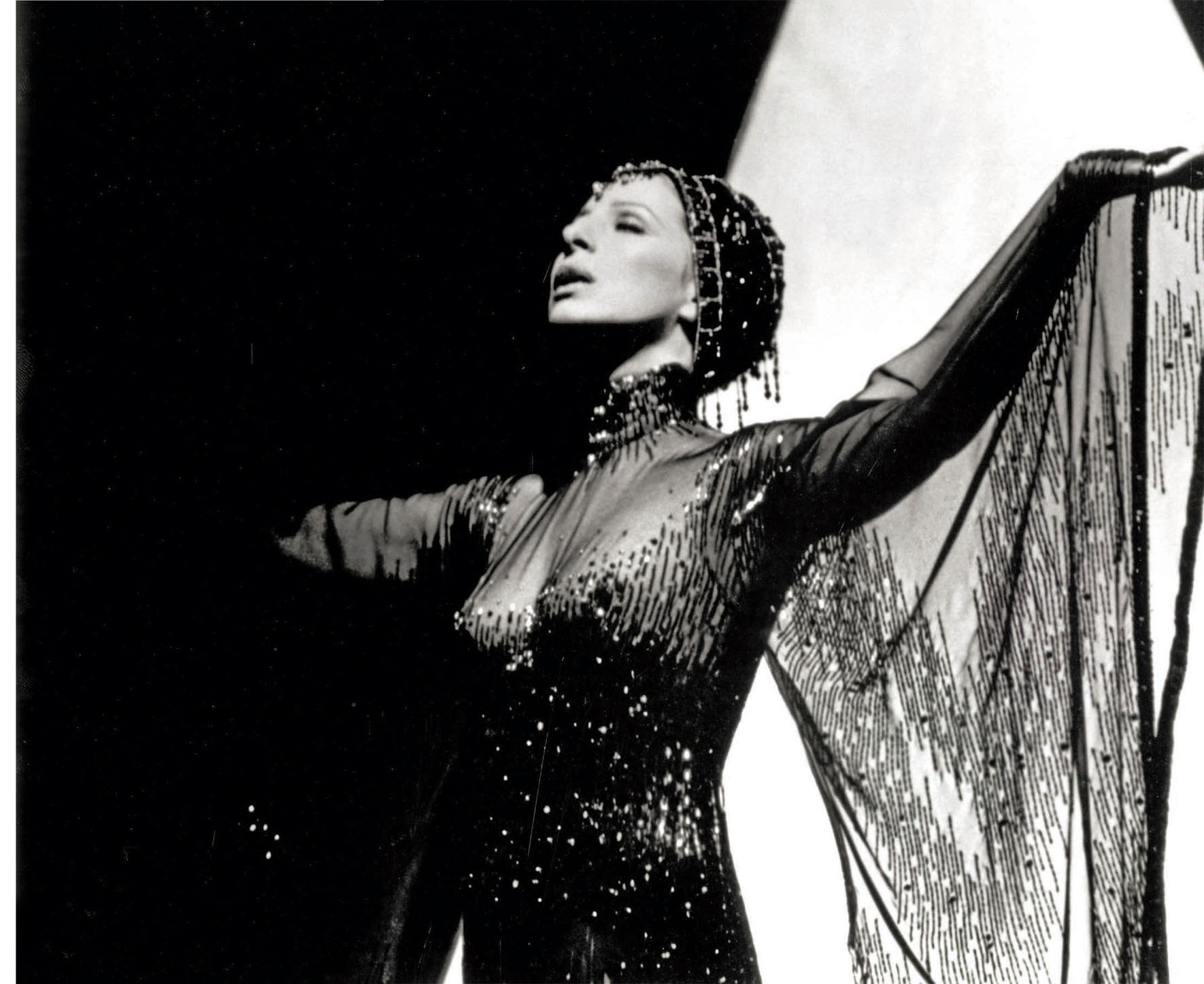
Barbra Streisand in Funny Lady (1975). Costume design by Bob Mackie and Ray Aghayan.
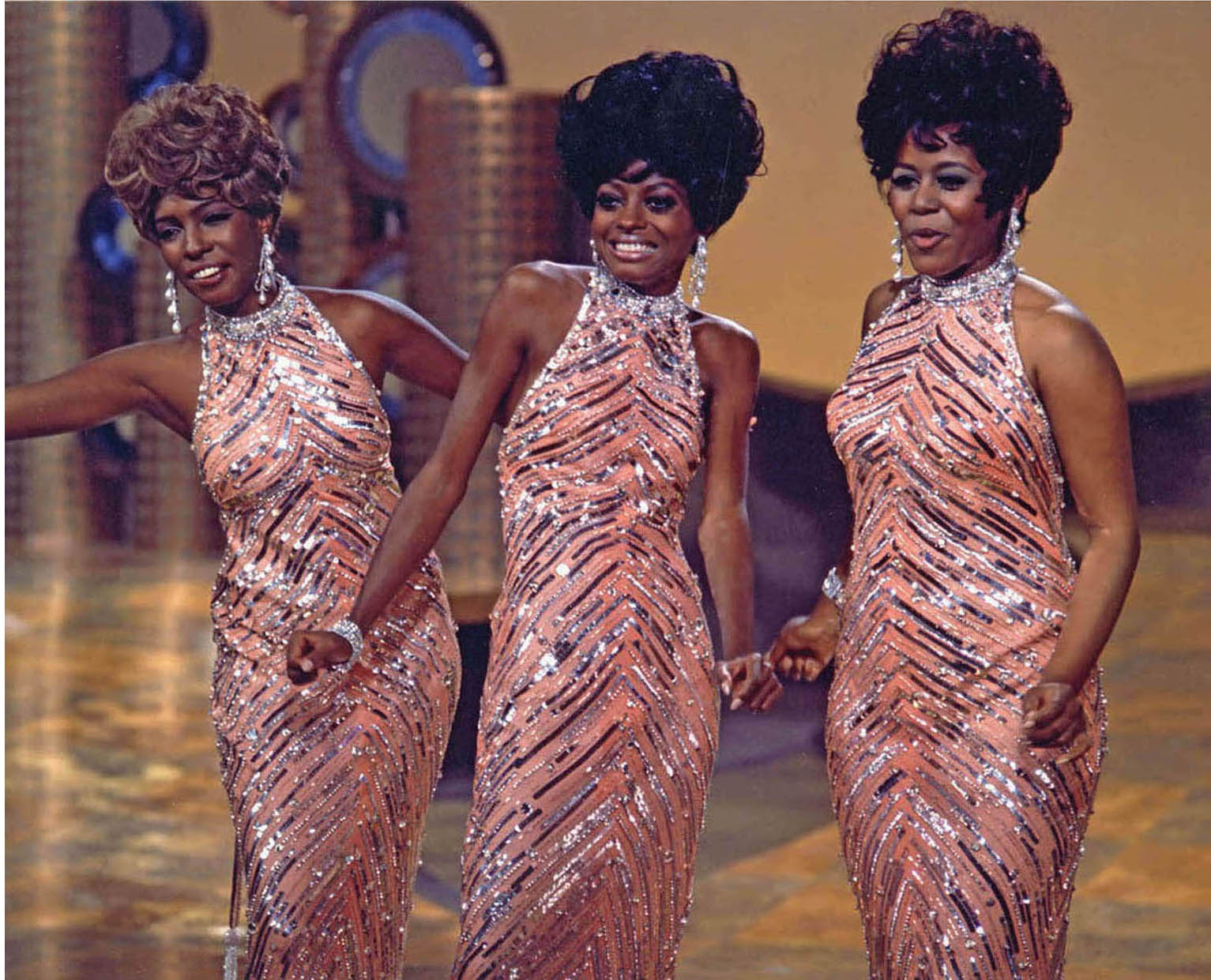
Diana Ross and the Supremes in Bob Mackie designs, 1969.
Mackie married actress Lulu Porter (real name Marianne Wolford) on March 14, 1959. The couple had known each other in high school, where they appeared in a production of Anything Goes together. The couple had a son—Robert Gordon Jr., known as Robin—who was born on October 15, 1959.
Mackie spent two years at Pasadena City College, majoring in advertising art and illustration and won a scholarship to Chouinard Art Institute. He only stayed a year at Chouinard, and got his first job sketching for designer Frank Thompson at Paramount. But sketching clothes for Glenn Ford in Love is a Ball (1963) was not the glamorous beginning for which Mackie had hoped. His next job was sketching Marilyn Monroe’s wardrobe for Something’s Got to Give (uncompleted) for Jean Louis. When Marilyn was suspended by the studio and production shut down, Mackie returned to Paramount to sketch for Edith Head on A New Kind of Love (1963).
Mackie realized that the glamour he expected to find working in films had shifted to television. Mitzi Gaynor gave Mackie his first professional break, and he designed for her TV specials and live appearances. “I had very little experience, but Mitzi trusted me. She gave me a chance,” Mackie said.
Mackie divorced his wife in 1963. That same year he met designer Ray Aghayan. Aghayan had been born into a wealthy Armenian family living in Tehran in 1928. Aghayan’s mother was a designer for the family of Reza Pahlavi, then the Shah of Iran. Aghayan’s fascination for American movies made him want to study in California. When Edith Head had been hired to design Judy Garland’s costumes for her CBS television variety show in 1963, Aghayan was brought in for the remaining costuming needs. But after the first show, production was shut down for two weeks for some revamping. Head found that she had no time to design a weekly show, and producer George Schlatter asked Aghayan to submit some sketches for Garland, which Garland approved.
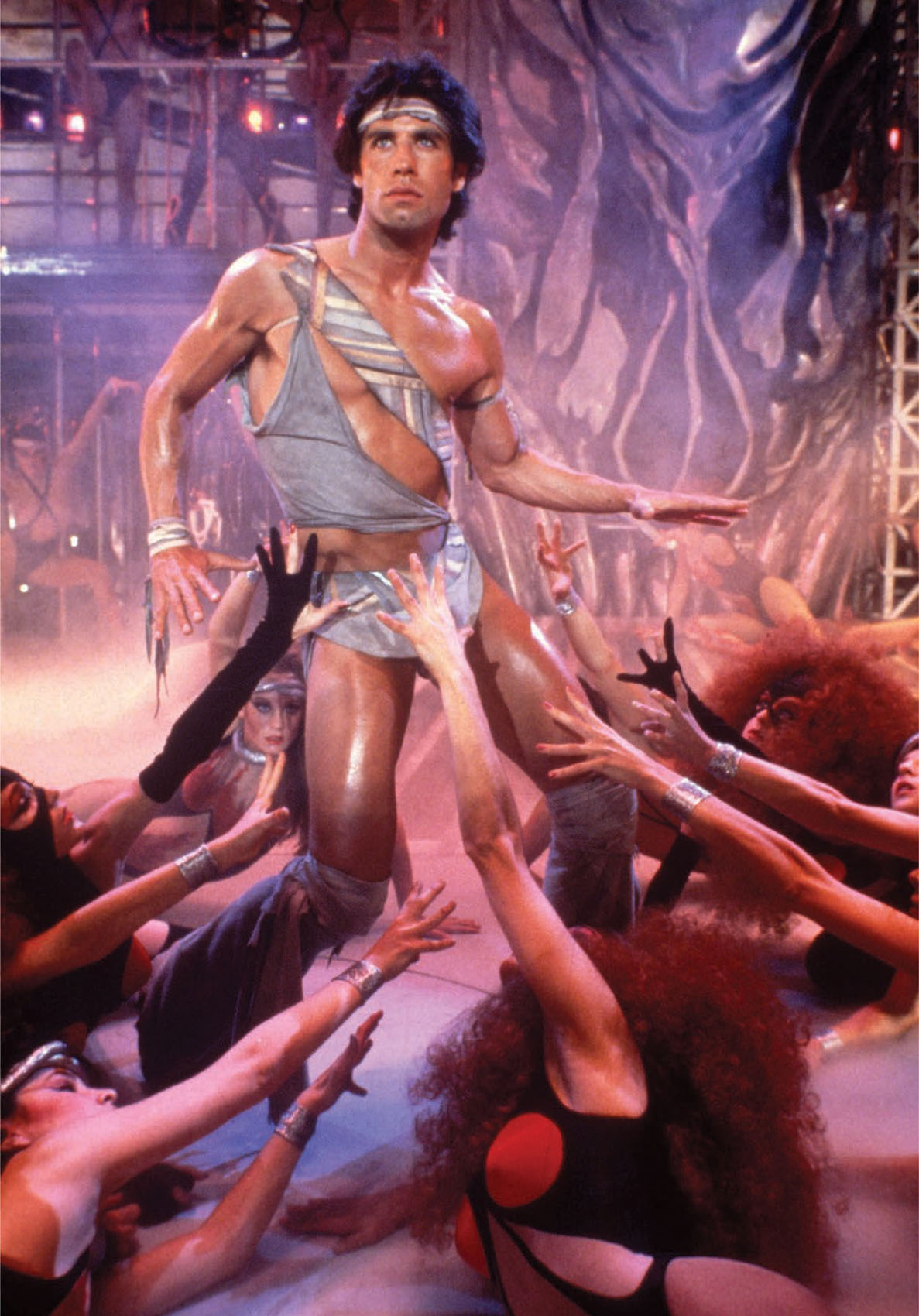
John Travolta in Staying Alive (1983).
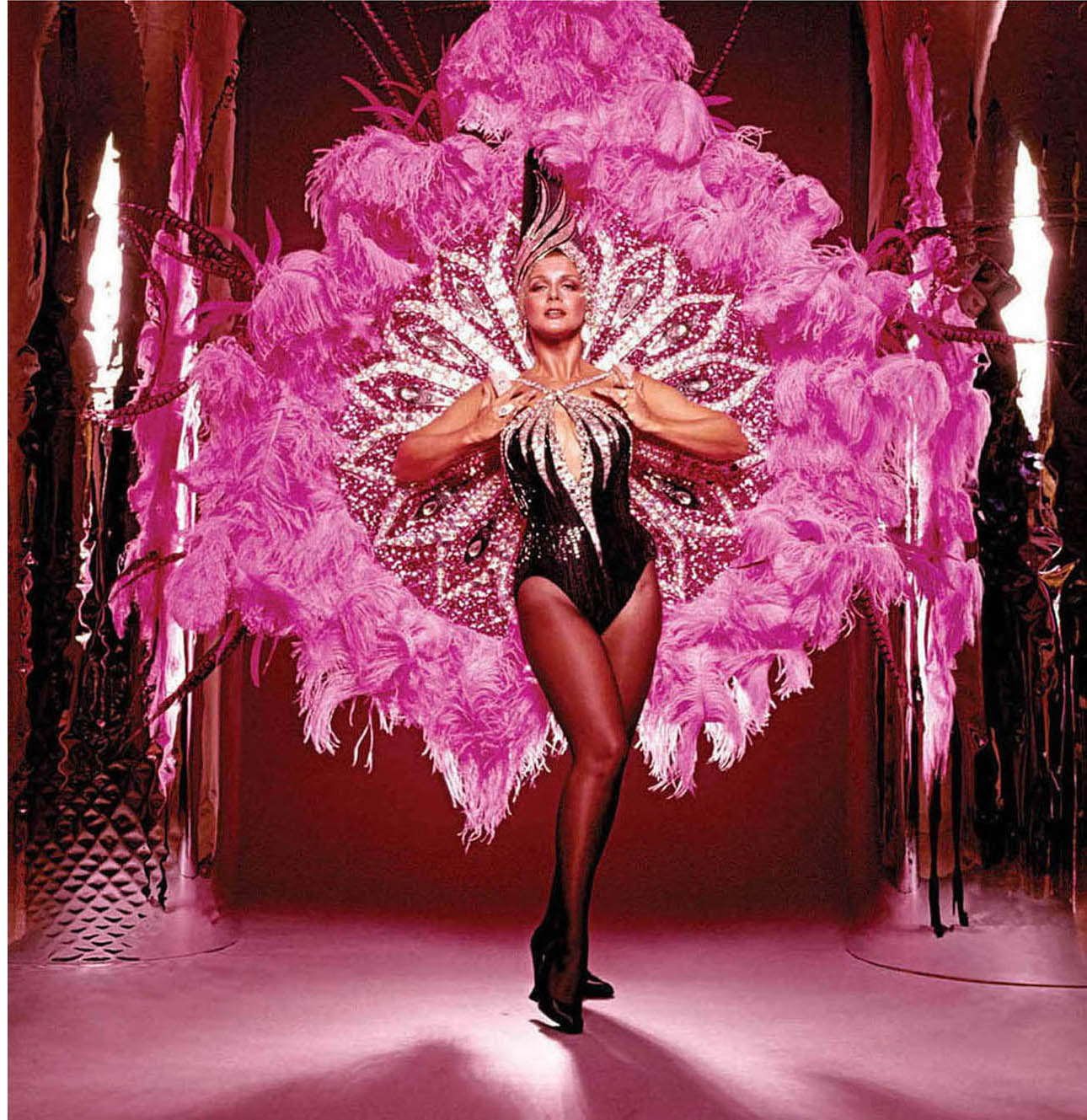
A Bob Mackie costume design for Ann-Margret’s Las Vegas nightclub act.
Mackie and Aghayan designed not only for Garland, but for her guests, which included Ethel Merman, Peggy Lee, and Barbra Streisand. “What he taught me about designing,” Mackie said of Aghayan, “was that it was always about the stars, about making them look good—making the audience excited to see them even before the star opens her mouth.
“I thought all TV series would be as crazy as that one,” Mackie said of The Judy Garland Show. “It was exciting, but totally unpredictable. You never knew what to expect from Judy—never even knew if she’d finish a song. At times, she was so warm and pleasant. And at times she could behave so badly. Yet Judy was Judy, and anyone who thought she could do a complete TV series and behave herself was crazy. It was a great relief for me to realize that all TV shows weren’t like Judy’s.”
In 1967, Joe Hamilton was producing a one-hour variety show starring his wife, Carol Burnett, for CBS. When the Hamiltons were assembling key personnel, they saw Mitzi Gaynor’s show in Las Vegas. Impressed not only with Mackie’s glamorous costumes for Gaynor, but also with those for the comedy sketches, they asked for a meeting with the designer. They hired Mackie, who designed as many as fifty costumes per show for the The Carol Burnett Show’s eleven-year run. Burnett credits Mackie with helping to form some of her most memorable characters, including Mrs. Wiggins, Nora Desmond, and Eunice. For a Gone with the Wind parody, Burnett as Starlet O’Hara was supposed to have green curtains placed sloppily over her dress to lampoon the drapery dress from the original film. Mackie brilliantly had Burnett sport the curtain rod through the draperies as she uttered the side-splitting line, “I saw it in the window and couldn’t resist!”
After she guest-starred on the Burnett show, Cher asked Mackie to design her costumes for her upcoming Sonny and Cher Comedy Hour (1971) with then-husband Sonny Bono. In Cher, Mackie found a perfect muse—a woman who moved easily between streamlined glamour and deadpan comedy. Cher could wear anything, and audiences tuned in every week to see what Mackie had designed for her. In 1975, Cher was featured on the cover of Time magazine in a Mackie gown. “It really bugs me people say that if it weren’t for her costumes, what would Cher be?” Mackie said. “They say I remade her, gave her a new glamour image. First of all, a woman is what she is. If she has to be ‘remade’ constantly, there’s no lasting star quality to begin with. But besides that, Cher plunged into the glamour thing long before I started working with her.”
Mackie’s near-nude designs for Cher sometimes got the pair in hot water with the censors. A CBS affiliate in Cincinnati even dropped the show altogether. But the public stayed titillated. In 1986, after being snubbed for an Oscar nomination for Mask (1985), the Academy of Motion Picture Arts and Sciences asked Cher to present the Best Supporting Actor award. The Academy set down a list of rules about what could or could not be worn by presenters. For Cher, they had thrown down the gauntlet. She told Mackie to “really do something” and he designed a gown that could have been worn by an Indian warrior princess, complete with Mohawk headdress. When Mackie questioned Cher about the possibility of upstaging the winner in it, she thought, “Fuck it, this is what I want to wear.” There was a media feeding frenzy the following day, asking how could Cher, now moving into the realm of being a serious actress, wear such a getup to the Academy Awards. But Cher had the last laugh. The dress has become one of the most iconic looks in Oscar history. When Cher accepted her Oscar for Moonstruck (1987) in 1988, Mackie dressed her in an embroidered gown embellished with crystal beads that was a throwback to 1915. While it still bared plenty of flesh and evoked Cher’s style, the beauty of the gown won over critics.
Concurrent with his television work, Mackie occasionally designed for films. A costumer was originally hired to supply costumes for Lady Sings the Blues (1972), but Diana Ross wanted her own designer. Mackie had worked with Ross on a TV special and was asked to step in only two weeks before principle photography began. Mackie’s vision for Ross was not to duplicate Billie Holliday’s look—Holliday was a much larger woman than Ross. But Mackie and Aghayan settled on just doing beautiful 1930s clothes for Ross, and it garnered them (along with Norma Koch) an Oscar nomination.
The 1975 film Funny Lady was a sequel to Funny Girl (1968) with Barbra Streisand reprising her role as Fanny Brice. Mackie and Aghanyan recreated some of Brice’s most famous costumes, but Streisand put more emphasis on looking good than funny. As they had for Diana Ross, they chose beautiful clothes of the 1930s for Streisand’s day and evening wear. “I was glad I was working with my partner, Ray, on that one,” Mackie said. “Some days I’d have to say, ‘I can’t take it anymore. You’ll have to take over for today.’ It wasn’t what you’d call a bad experience, but I don’t like working with people who get themselves involved in all aspects of the production, who have to play boss. Barbra is definitely one of those women who get totally involved. And you accept from the start that you’ll be working with her. But you soon begin to realize that, in her case, she’s a pretty good judge. She’s very critical of herself and has done a lot of self-study. She really knows, for example, which are her best colors. After awhile, you stop fighting and start listening. It makes the job easier—and in the long run, you improve upon your own work.”
The film Pennies from Heaven (1982) starred Steve Martin and Bernadette Peters, and was based on a British miniseries of the same name. Mackie was able to design a wardrobe for big-budget musical numbers, the kind he dreamed of as a young boy. But the film also had a dark tone that those musicals never had, and it certainly was not what people were expecting from a Steve Martin film. “I loved doing Bernadette’s drab, schoolmarm costumes,” Mackie said. “In this town especially, you can get very typecast. People thought I could handle the fantasy parts of Pennies, but they said, ‘He can’t do the realistic stuff.’ I’m very thankful they gave me the chance to do reality costuming because I’d like to do more dramatic kinds of efforts rather than all this glitter and flash.”
Mackie began his first ready-to-wear collection in 1982. His empire grew to include other products, including his signature fragrance, “Mackie,” a series of collectible Mackie Barbie dolls, and the Wearable Art television program for the QVC network. Mackie has amassed thirty-one Emmy Award nominations and nine Emmy Awards. In 2002, he was inducted into the Television Academy Hall of Fame—the only costume designer to be honored there.
In 1993, Mackie’s son, Robin, passed away from complications of AIDS. Mackie’s life partner, Ray Aghayan, died October 10, 2011. Mackie’s design house remains so busy that he has to turn work down, even from the women who helped to solidify his reputation. In 2014, Cher tweeted to her fans about her Dressed to Kill tour: “Telling you Something That Has BROKEN MY HEART, THE MAN WHO MADE ALL MY COSTUMES SINCE 1972 DECIDED HE COULDNT DO MY LAST TOUR.” The diva continued, “NO MATTER HOW DISAPPOINTED ANY OF U ARE, YOU DONT KNOW MY GRIEF. IM SURE BOB CANT KNOW HOW MUCH I MISS HIM. FELT I HAD TO TELL U IM CRYING. I TRIED TO CONVINCE HIM TO END WITH ME, BUT HE HAD MANY REASONS As 2 Why He couldn’t do it. 2 many obligations Not Enough Time EVEN 2 DO 1.” (sic)
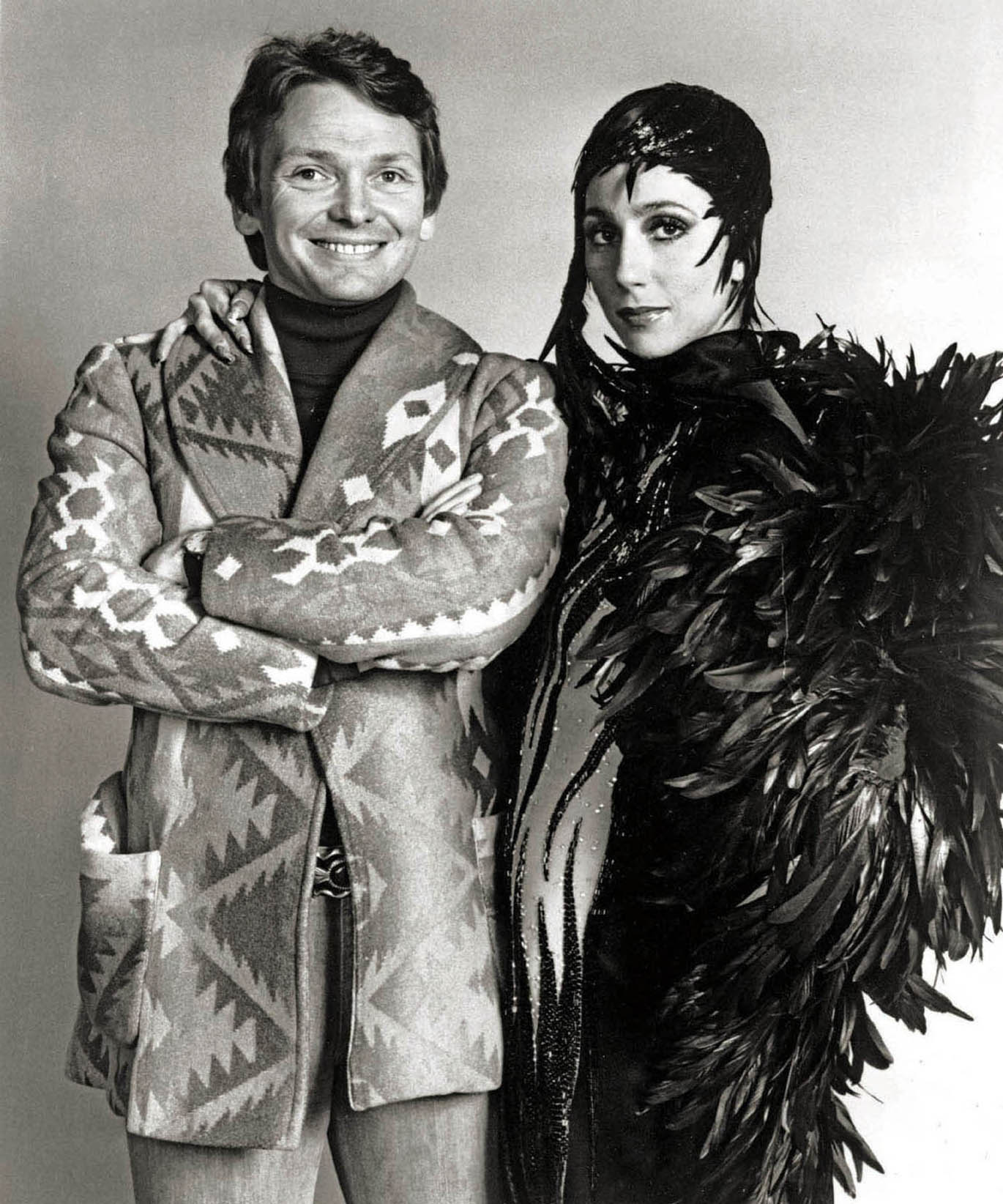
Bob Mackie and Cher
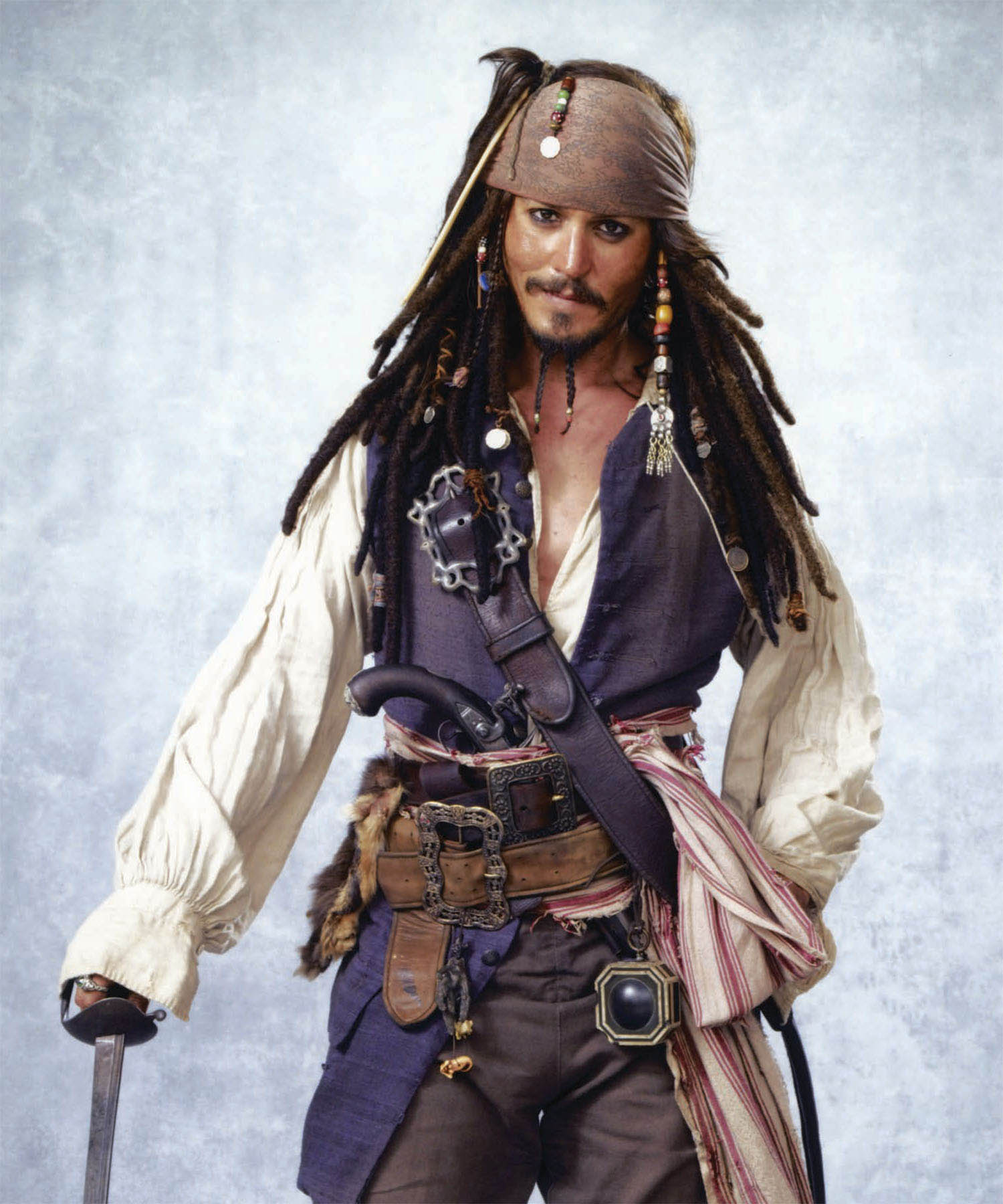
Johnny Depp in Pirates of the Caribbean: The Curse of the Black Pearl (2003). Costume design by Penny Rose.